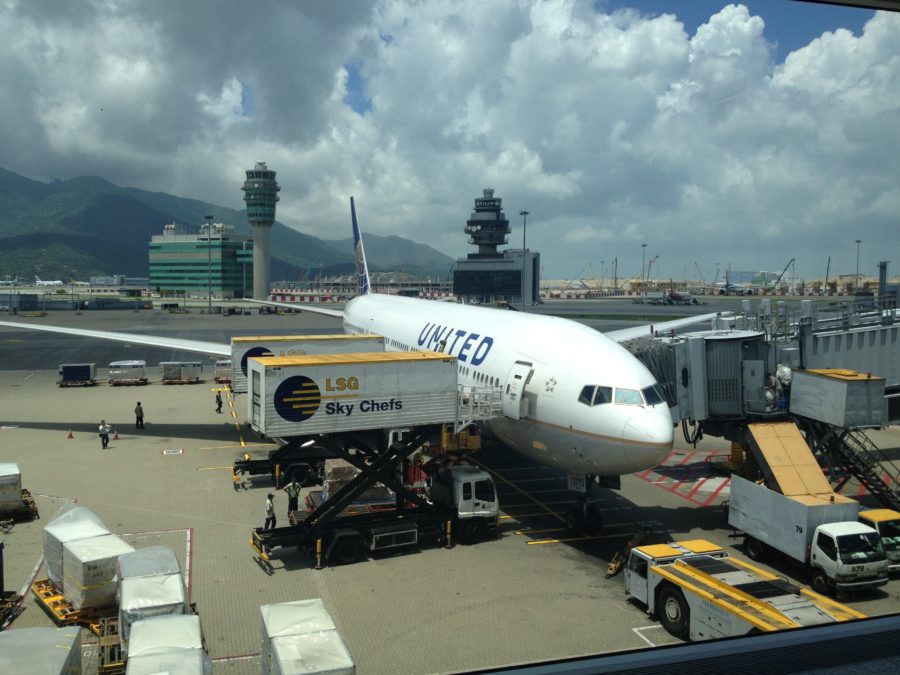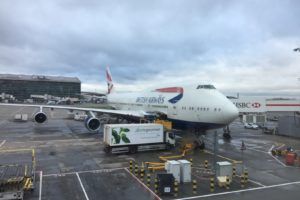How To Achieve United Status With The New Program Changes For Less
United has made three significant changes to their MileagePlus program this year. Specifically, they have eliminated their award chart, changed the way upgrades for Platinums, 1Ks, and Global Services work, and the way one can earn status on United. The first change was announced much earlier this year and in general, resulted in everyday (not saver) award prices on long-haul flights being risen (in both economy and business class), although some award prices for short haul flights went down, resulting in some 5,000 award flights.
The second change involved eliminating Global and Regional Premier Upgrades and replacing it with a new PointsPlus system, in which top tier award program members earn a specific amount of points per year or for hitting a certain threshold and in which you can upgrade to business, Polaris, or Premium Plus for different specific prices, which in general is a positive change.
The last change occurred a few weeks ago and involved changing the way that you can earn status on United, which is what I’ll mostly be covering in this article. I’ll only briefly cover the specifics of the changes (as many other blogs have covered that well) but will instead focus on loopholes to the program and how to earn status with the new rules.
United MileagePlus Background and Program Changes
Historically, airlines awarded status and the amount of miles earn based solely on the amount of miles flown. That gave birth to the traditional mileage run, in which people would travel from point A to point B for a cheap price via a few stops, in order to increase the overall miles flown. However, few to no airlines still offer this system, and airlines generally award miles and points that qualify for status solely based on either the distance from the origin to the destination or based on the amount of money spent on a ticket. United changed their award program quite a few years ago to a revenue based program, which means that on flights ticketed by United, you earn a specific number of miles per dollar spent (also depending on status) and in which you earn status both based on the number of miles flown (although you would earn more in a premium cabin) and based on the amount of money spent solely with United.

This resulted in United’s PQDs, PQMs, and PQSs. PQDs are awarded based on the number of dollars you spend with United on flights on the base fare, PQMs were awarded based on the number of miles you fly (although more awarded in premium cabins), and PQSs are the number of segments you fly on United or a partner, although again, more were awarded in premium cabins. You also had to fly a minimum of four flights on United to be eligible for status. There also were some other rules and loopholes, but there really isn’t much point in wasting both my time and your time trying to get into that as for the most part, it’s obsolete.
However, United recently introduced a new set of rules for qualifying for stars starting on January 1, 2020, which relies on two measures, PQPs (premier qualifying points) and PQFs (premier qualifying flights). You can earn PQPs by the amount of money that you spend on a United issued ticket, meaning that you earn 1 PQP per dollar spent. However, you previously couldn’t earn PQDs for money spent on MileagePlus award co-pays, paid upgrades, and partner flights (more on that later), although now you get 1 PQP per dollar spent on co-pays and paid upgrades, which means all else being equal, that you overall should on average earn more PQPs than PQDs.
Additionally, you earn 1 PQF per flight on any Star Alliance carrier (including United) or United partner airline credited to MileagePlus (no cabin bonus or loopholes). I won’t get into many more details about it as plenty of other sites have done it very well (and I guess I am a bit late to the game to do that), and this article is more focused on “manipulating” the system. The rates for the amount of PQPs and PQFs are listed below.

Overall, the new system is very good for people who travel relatively infrequently on paid business class tickets for work, as you will quickly rack up a lot of PQPs which can quickly get you top-tier elite status. Additionally, it is pretty good for people who travel short-distance very frequently on commuter flights, as you will rack up PQFs and PQPs pretty quickly. However, this is pretty bad news for those who don’t spend lots of money on United flights but fly long-distances, meaning that you probably won’t rack up as many PQPs.
United says that with the new status requirements more people will earn lower tier status but fewer will earn top-tier 1K status, and that one of their main goals was to eliminate loopholes for people trying to game the system by eliminating the traditional status requirement of the amount of miles that you fly with United. However, with the new program, they have left open a very big loophole that can get you top-tier status for a fraction of the amount of money that you would have had to spend with their previous award program.
The Partner PQP Loophole
With the new program, the amount of money you have to spend to get status went up for every status level. Instead of having to spend $12,000 (to earn 12,000 PQDs) to get 1K status you now have to spend $18,000 (to earn 18,000 PQPs) and 54 or $24,000 (to earn 24,000 PQPs) segments to get 1K. But that isn’t entirely true. When you book a ticket on a partner airline and credit the flight to United, you don’t earn 1 PQP per dollar spent, you earn the amount of redeemable miles that you would regularly earn divided by 5 or 6, depending on the airline.
While you earn redeemable miles on flights you book with United by multiplying the fare by a specific number, depending on status, United has a different chart for each of their partners for earning miles on flights booked with the other airline, which can make earning PQPs a lot easier. In terms of PQPs, preferred partners earn the amount of miles that you would regularly earn divided by 5, while other partners earn the amount of miles that you earn divided by 6.

For example, if you were to earn 1,000 redeemable miles on Lufthansa, a preferred partner, you would earn 1000/5, or 200 PQPs. However, if you were to earn 1,000 redeemable miles on Turkish, a standard partner, you would earn 1000/6, or about 167 PQPs. So for example, take a random flight on All Nippon Airways that might cost $500. If you were to book it with United, it would give you 500 PQPs, as you earn 1 PQP per dollar spent.
However, if you were to book the same ticket with ANA and then credit the flight to United, you would earn the amount of miles that you’d normally earn divided by 5. So say that the ticket would earn you 50% redeemable miles per flight, then you would earn 6,000 redeemable miles for that flight, for flying 12,000 miles total. You would then earn 6000/5, or 1,200 PQPs, or 2.4 times the amount of PQPs that you would earn if you had booked with United. So this means that if you book with a partner airline and credit the flight to United, as long as you have a relatively high mileage earning rate for that partner, you can earn a lot more PQPs with partner airlines than if you booked with United.

Applying This Strategy: Long-Haul Premium Economy Flights
The best ratio for money spent to the amount of miles earned on most of United’s partners is for premium economy tickets. While economy class (not full fare) tickets usually only earn 25-75% of the miles flown, which translates into less PQPs, premium economy fares on most of United’s partners generally earn 100-125% of the miles flown. Business class usually does earn a bit more than premium economy, although most discount business class tickets only earn 100-125% of the miles flown, which is about the same rate as earning miles in premium economy. When you also take into account that business class tickets generally are outrageously expensive, the best class for earning PQPs with partner airlines is in premium economy. This strategy will require taking status runs, a type of mileage run where your primary goal is to accrue airline status.
Some of United’s partners offer (relatively) inexpensive fares on round-trip ultra-long haul flights in premium economy AND offer high earning rates, notably Singapore Airlines, ANA, and Air Canada. For example, you can fly from New York to Denpasar (along with others in its vicinity, such as Singapore and Jakarta) on Singapore Airlines in premium economy for only about $1,150, round-trip. Singapore Airlines offers a 100% redemption rate in premium economy, so you will earn redeemable miles at a 1:1 rate for the amount of miles flown. Therefore, you’d earn 20,300 redeemable miles on this flight if you credit the miles to United, which on its own is worth about $280. However, if you divide those redeemable miles by 6 (as it isn’t a preferred partner), you get the amount of PQPs that you’d earn on this ticket, so you would end up getting 3383 PQPs, while if you had booked the ticket with United, you’d only earn 1150 PQPs, making the earn rate 3x better with Singapore Airlines.

But it gets better. Take this example of a ticket on ANA from New York to Manila round-trip, which costs about $1,200. In total, it will be about 17,000 miles (8,500 miles one-way), and since you earn 100% of miles flown in premium economy, you would earn 17,000 redeemable miles. However, since ANA is a preferred partner, you will earn 17000/5, or 3,400 PQPs, again about 3x the rate at which you’d earn if you had booked with United.

And lastly, there’s also a mileage run which will get you all the PQPs that you need for Silver Status and will get you most of the way to the 5,000 PQPs that you need to avoid the PQF requirement. Take this round-trip ticket on Air Canada from Houston to Mumbai in premium economy, which costs about $1,050 (which on itself is a great deal, not even taking into account the PQPs and miles earned). Round-trip, it’s about 18,000 miles between the two airports, although you earn 1.25 times miles in Air Canada (discount) premium economy, meaning that you’ll earn about 22,000 redeemable miles, which on its own is worth over $300. However, since Air Canada is a preferred partner, you will earn 22000/5 miles, or about 4,400 PQPs, which is 4 times the rate of earning PQPs as on United. If you do this mileage run, you will only be 600 PQPs away from automatically earning Silver status without the PQF requirement, or would only have to earn 8 more PQFs to get Silver.

The list of possible mileage runs which earn you many more PQPs per dollar than booking with United goes on and on; most of the best ones are from North America to South and Southeastern Asia. Theoretically, if you were to try and earn United status only through these status runs, you could accrue United 1K status for only spending $6,000 on partner flights (with the PQF requirement waived), or only $4,000, as long as you hit the 54 PQF requirement. The PQF requirement is a little bit easier to accomplish, as all you have to do is purposefully take as many connections as possible when flying United (or take segment runs, where you try and take as many flights as possible to obtain PQFs), to accrue as many PQFs as needed for your status goal.
To recap, for people who want to game the system and obtain status by spending less, the new requirements may actually be good, which is ironic, as United’s goal was to eliminate ways to game the system. By taking partner flights on partner airlines such as Air Canada, Lufthansa, ANA, EVA Air, or Singapore Airlines, booking flights with them, and then crediting the miles to United (preferably on long-distance flights in premium economy), you will end up gaining many more PQPs per dollar than on United flights. Before you book a ticket though, calculate how many miles you will earn per dollar (using these partner charts) for the flights. Also, make sure that you don’t book the flight with United and that you book it with a partner airline, because if you book with United, you will get the same 1:1 rate for earning PQPs.
However, of course, you shouldn’t try and earn United status through only doing these mileage runs, because what’s the point in United status if you never fly United. Instead, I would probably only recommend taking one of these mileage runs so that you can achieve a higher status level than you normally would with your normal United flights. Lastly, flying long distances just for the sake of flying isn’t especially good for the environment (and flying for most people isn’t especially pleasant), so if you do go the other side of the world with this strategy, consider carbon offsets, or use it as an opportunity to explore other places in the world.
Why Would You Want United Status In The First Place?
Again, of course, you should only consider doing a mileage run like the one I talked about above if you think that United status would be worth it to you. That means that United status is worth a different amount for everyone, and when you consider status/mileage running to the other side of the world for status, first consider how much you value it. Listed below are the amount of PQFs and PQPs it takes to earn a specific status level, and the major benefits of them.
United Silver
- Requires 12 PQFs and 4,000 PQPs or only 5,000 PQPs
- Earns 7x redeemable miles per flight booked with United
- Complimentary Economy Plus at check-in
- Eligible for free upgrades on the day of departure
- 1 free checked bag
- Group 2 boarding
- Premier Access check-in
- Better award availability
- Priority phone line
- Priority airport screening
- Discounted CLEAR membership
- Complimentary Hertz Gold Plus Rewards Status
- Star Alliance Silver Status
United Silver
- Requires 24 PQFs and 8000 PQPs or only 10,000 PQPs
- All of the benefits of United Silver status
- Earns 8x redeemable miles per flight booked with United
- Eligible for free upgrades 48 hours before the flight
- Complimentary Economy Plus at booking
- 2 free checked bags
- Group 1 boarding
- Free same-day flight changes
- Complimentary Marriott Gold Status
United Platinum
- Requires 36 PQFs and 12,000 PQPs or only 15,000 PQPs
- All of the benefits of United Gold status
- Earns 9x redeemable miles per flight booked with United
- Eligible for free upgrades 72 hours before the flight
- 3 free checked bags
- Complimentary access to Economy Plus + 8 companions
- Discounted United Club Membership
- 40 PointsPlus – enough for one upgrade from economy to Polaris on a long-haul flight or two upgrades from economy to First or short-haul Business

United 1K
- Requires 52 PQFs and 18,000 PQPs or only 24,000 PQPs
- All of the benefits of United Platinum status
- Earns 12x redeemable miles per flight booked with United
- Eligible for complimentary upgrades 96 hours before the flight
- Pre-boarding
- Complimentary CLEAR membership
- 320 PointsPlus – enough for eight upgrades from economy to Polaris on a long-haul flight or sixteen upgrades from economy to First or short-haul Business
The value of each status level can stack up quite quickly. Even United Silver Status can be worth over a thousand dollars, while United 1K can be worth almost $10,000 if you fly United regularly.
Conclusion
Overall, would I say that these changes are positive to MileagePlus? A lot of other bloggers have had said a lot worse than me about the program, and while I don’t think it’s positive, I don’t think that it’s as bad as other people think. Previously, you could waive the PQD requirement by spending on a United credit card and could easily rack up PQMs by taking mileage runs (although this didn’t apply for 1K), which now has almost fully been eliminated. Additionally, United has basically changed what an award program means – you used to earn miles and status solely based on how many miles you flew, and now, you don’t earn status or redeemable miles based on miles flown – you can (for the most part) only earn them through spending money.
However, with each award program come loopholes. United has left a pretty big one open with their new award program, which involves the pretty complex process of buying long-distance flights with other airlines and then crediting the flights to MileagePlus. With this strategy, as long as you are a semi-regular United flyer and earn a reasonable amount of PQPs and PQFs in a year, with a status run, you can earn enough PQPs to get mid to top tier status on United.
What do you think of United’s new program changes and this loophole?




